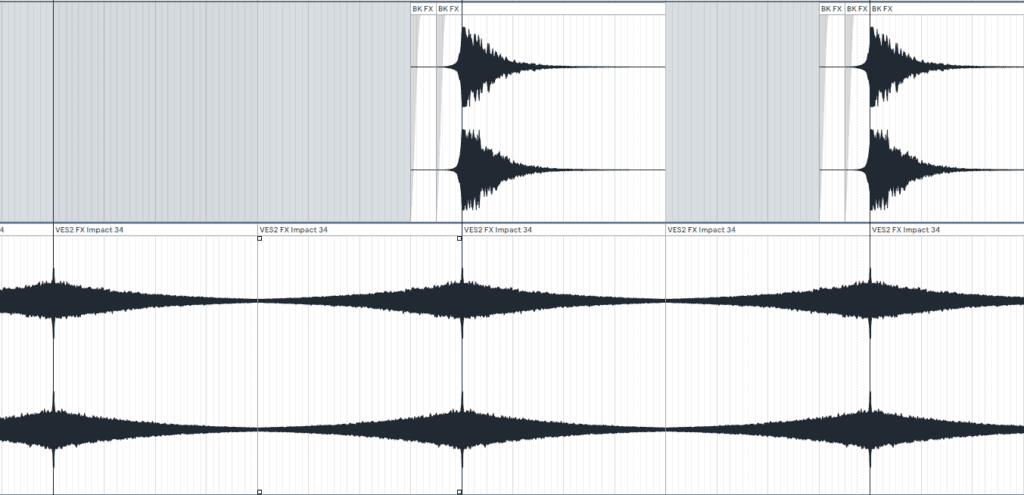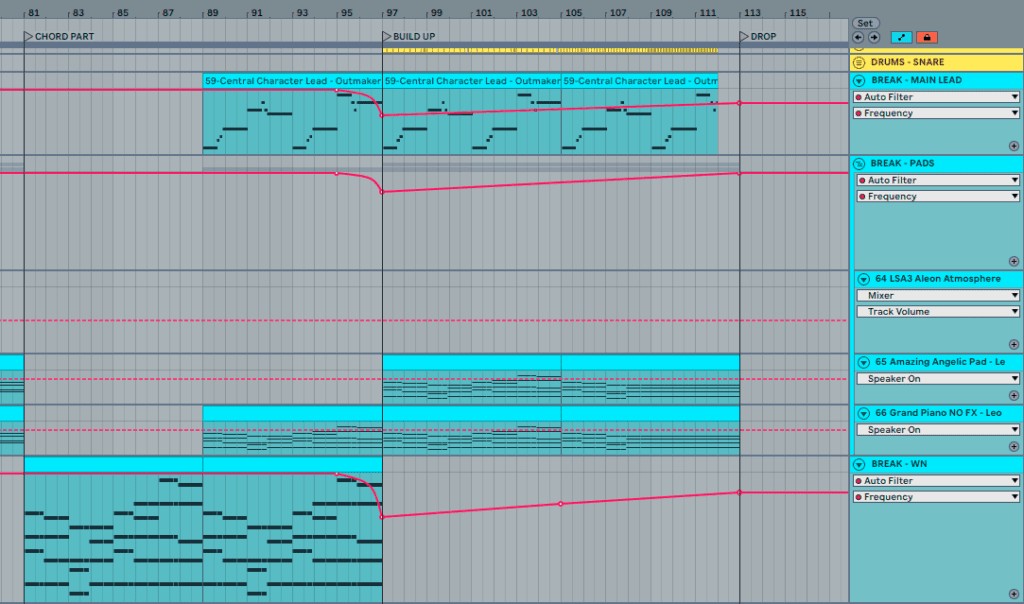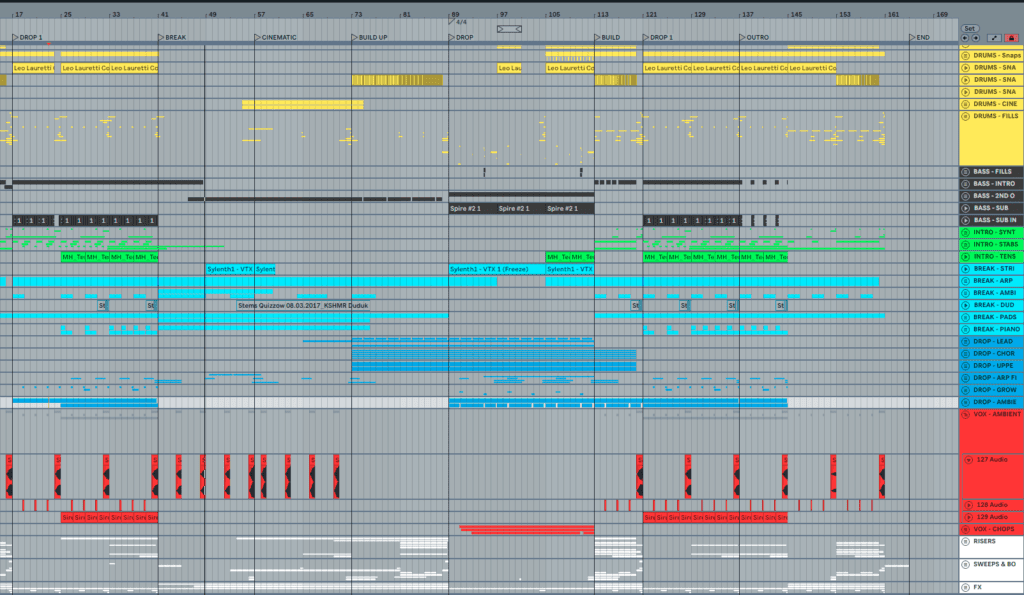Today we’re going to talk about build-ups and how you can make the transitions of your track smoother.

Transitions are essential to your songs, as they not only create fluidity between sections by enhancing the tension and release of these changes, but also enhance your tunes more by adding extra space and depth to your tracks. If well-crafted, these will augment the pace of your song, which will consequently help you keep the listener hooked and waiting for more.
In today’s post, we’ll talk about XX ways you can enhance your transitions in the following ways:
You don’t necessarily need to use all of these techniques at once, but you definitely can combine some of these techniques as well, as I’ve done in the tracks that I’ve signed on major labels (Enhanced, Armada, SONY)
Here’s what we’ll talk about today:
Let’s dive right in!
What Makes a Great Transition?
Fluidity
A great transition is smooth. It takes you from one section to another without you feeling that you’re actually going to it. You can hear an example of it here when Ben Bohmer introduces a slight riser before the section ends:
That doesn’t mean it can’t be abrupt. It can, of course, but if it’s done in a way where the elements preceding the transition build tension and release it while it’s transitioning. In Wake Me Up by Avicii, the song goes directly from the drop to the break without any gaps, but it sounds ok since the elements before the transition create the right amount of tension to move you abruptly to the break. Listen to the transition below:
Anticipation
In addition to that, the second key of transitions is building anticipation and tension. The elements right before the transition have to create the right atmosphere for the track to build tension to get your listener excited to continue listening to the song as it progresses through 8-bar loops and/or different sections.
CYA, for example, uses an arp fill in the first transition to introduce the high stab (1.17), then white noise with drum fills, as well as taking the kick right before the second 8-bar loop transition (1.35). It’s important to mention that CYA does that within a section, but also does it to enhance sections, as you can see below:
Novelty
Lastly, changing the vibe of the track (low cutting it, taking elements off, etc) is also a good way to intensify transitions.
As humans, we’re able to spot differences better than similarities, and changing the sound that the listener was used to can make renew the energy of a tune. Listen to how Pete K re-energizes his drop by making the preceding transition emptier than the drop:
Novelty can always enhance a transition by bringing something new for the listener to focus on. Not only does it help the listener renew their attention span, but it also helps to relieve the repetitiveness of electronic music.
How Can You Create a Great Transition?
Below, you’ll see 10 elements/methods that are used heavily by producers to smooth out the transitions between sections and 8-bars.
I would not recommend you use only one of them in your songs. In fact, the combination of multiple elements is what will make your transitions smoother. At the same time, you have to use them according to their sonic characteristics, since each of them brings a different sound to the table.
Tonal Risers
Tonal risers create tension and release and I love to use them at the end of sections. As you can see in the track arrangement below, they play a huge role during build-ups, but you can also place them before the end of a drop as well.

Listen below to an example of a tonal riser being used in a track now:
At the 0.46 mark, you can start to hear some rising lead sounds, which is called a Tonal Riser since it has a “tone” and is not only noise.
Filtering
When you’re moving from one section to another, for example, from a drop to a break, there are several ways in which filtering could play a big role:
Low cuts
Especially when doing a build-up, it’s important to clear out some of the low elements of the song so, this way, the drop hits with a bigger impact, as mentioned in this post. Listen to the two examples below and compare what you think:
As you could hear above, the filtering creates an empty space in the low end which makes the drop’s low end appear harder. Even though we didn’t change the drop, we create a difference before it hits, which makes it seem more impactful and, therefore, wider and fuller.
You can also use this technique during the drops, especially between 8-bar loops. The effect is the same as when used in build-ups, but this helps intensify the transitions within a section, renewing the energy of the tune.
High Cuts
I use high cuts mainly when I want to smooth out a transition and don’t want the elements to suddenly disappear. For example, let’s say you have a drop leading to an outro, instead of abruptly ending these elements, I’d use a high cut and filter them to make the transition less sudden.
Listen to the example below of INCA without the filtering:
And now listen to it with the filter:
The difference is subtle, but it does make the transition smoother and blends it in better with the track. This was done by simply adding a high cut automation and making a small dip before the end of the section, as you can see below:

Reverb & Delays
Sometimes you don’t want to use tonal risers. I have friends, for example, who avoid risers and build tension with reverbs and delays. When the song gets closer to the build-ups or transitions, most DJs these days crank up the reverb and the delays in the mixer because it creates a LOT of tension, so why not replicate this?
Although the method that I’m about to show you includes more effects than just reverb and delay, the Bass Kleph’s Easy Wash Out is an amazing FREE tool for Ableton live that creates tension by combining Delays and Reverbs with a Low-End Filter, as mentioned before. Check the video below:
Here’s a picture of it:

If you don’t have Ableton, you can also try Dada Life’s Endless Smile, as it does the same thing and a little more, but it’s a paid plugin:
Drum Fills
Ahh, drum fills, I just love them!
Some genres rely more on drum fills than others, but these elements help you fill the gap between sections and are normally used towards the end of an 8-bar loop.
Although a pretty old song, the song that always amazed me with its drum fills is Left Behind by Paris Blohm:
Such intensity and such power to end an 8-bar loop leaves me wanting more.
You can also use drum fills to simply connect sections as you can hear in this example:
Or here:
They are widely used and you can’t go wrong with using them.
Impacts & Sub Sweeps
These can be subtle or abrupt changes, and there are many ways to use impacts and sub sweeps to move from one section to another.
Transitioning from drop to Break.
This technique has been used throughout electronic music, and you can hear it in this song from Calvin Harris:
This is simply making the low end power fade away and end so you can then get to the break
Transition enhancers
My preferred way of using impacts is using sweeps as enhancements. This helps you intensify the end of a section and start of another. Different from the first method, this doesn’t make the section die out and is preferred for short and quick transitions. Listen below to Stay With Me without a sweep:
Now with sweeps:
This could also be used to intensify small parts and could be used in combination with “taking stuff out”, as the void that will be created could be anticipated to seem intentional. Listen below:
White Noise & Crashes
This is my preferred method of transition, especially for breaks.
The main focus of this technique is to join two sections or two 8-bar loops that may seem disconnected. Listen to how Imanbek did this in his remix of Roses, with more than one billion streams:
And he uses the same technique in this song:
As I mentioned in this post about ambience, I use this for all 8-bar loops as this helps produce more atmosphere and makes transitions smoother. To illustrate, look at the picture below. This shows how I used a crash and white noise downlifter in my tracks

Just to show you how well it works, listen below:
Other elements that you can use that serve the same purpose are Chimes. In addition to this purpose, it adds a tonal frame to the transitions that help them sound more interesting and unpredictable.
Vocal Ambiances
These are subtle to your transitions, but it does add a nice touch and it could be an awesome way to introduce a “human” or “analog” touch to your songs. At the end of your 8-bar loops, consider using a vocal riser that end at the end of the bar, as you can see in the red channel below:

Now, listen to it:
From the beginning, you can hear the “ahhhh”, and then you can hear it again at 0.16 and so on, as you can see above. You can also hear it extensively in the break (0.54)
These vocal ambiences have the same purpose as the White Noise & Crashes we’ve just talked about, but it adds a human touch to the sound. Instead of a purely digital track, you now have something that will be a mix of digital and organic, and also will smooth out your transitions.
Take stuff out
As mentioned before, contrast is a key element of stories and works equally well for a variety of music.
One difference in the elements that compose the song is perceived as something new by listeners, which helps them refocus while listening to your track. Pete K’s song Solace, for example, has a moment like this.
During the second 8-bar loop, after 28 seconds of the same vibe, he takes away the bass and bandpasses the song, which instantly triggers a reaction from me.
The same is done by Kim Kaey, but at the end of the section to enhance the vocals, as you can hear below:
These elements shift the attention from what the song previously was, to the novelty it brought, intensifying the upcoming 8-bar loop by bringing your attention back to the song
Arp Fills
Instead of using drums, why not fill the gaps of a transition with Arps?
Arp fills is a technique that I got from Madeon’s song Technicolor, which many other producers utilize as well. Listen to Technicolor’s Arp fill at 1.03 and at 1.40:
It just adds an awesome tonal upward flow that connects a section with the previous section flawlessly. Why? Since it’s not being used subtly in Madeon’s track, it takes the focus from one section to the next. Deniz Kenzo also uses this technique in his tune Beautiful Creature:
You can do this by creating a quick upwards progression and picking a plucky preset from any VST. For example, look at the midi below of the Arp Fill I’ve used in Stay With Me, which is in F#min:

I want to hear from you now!
These are 10 techniques I use to make the transitions between sections and 8-bar loops sound better.
Which of them will you try first?
Let me know in the comments below:
My favorite transitions are Bayer transitions. So weird and nerdy! These are some great examples too my dude 🙂